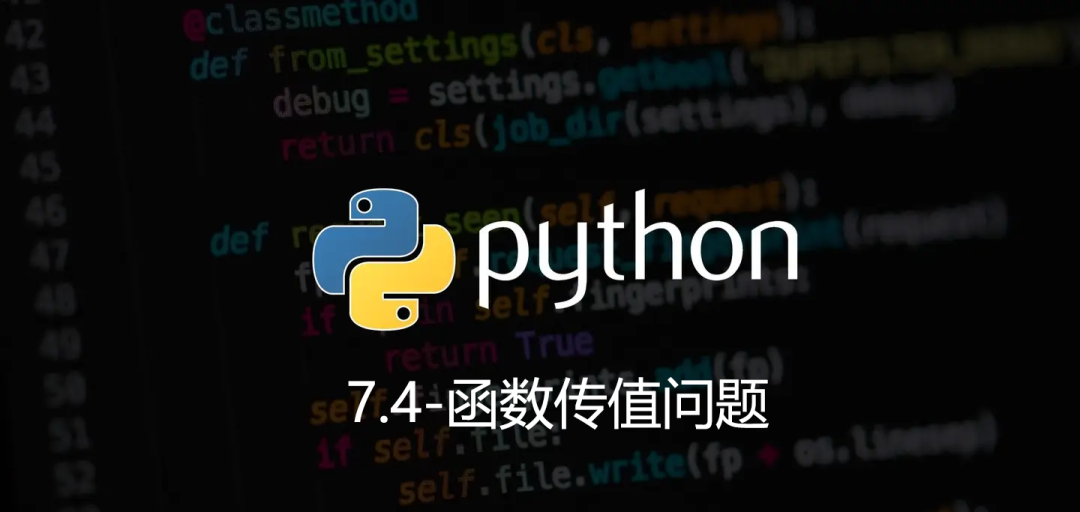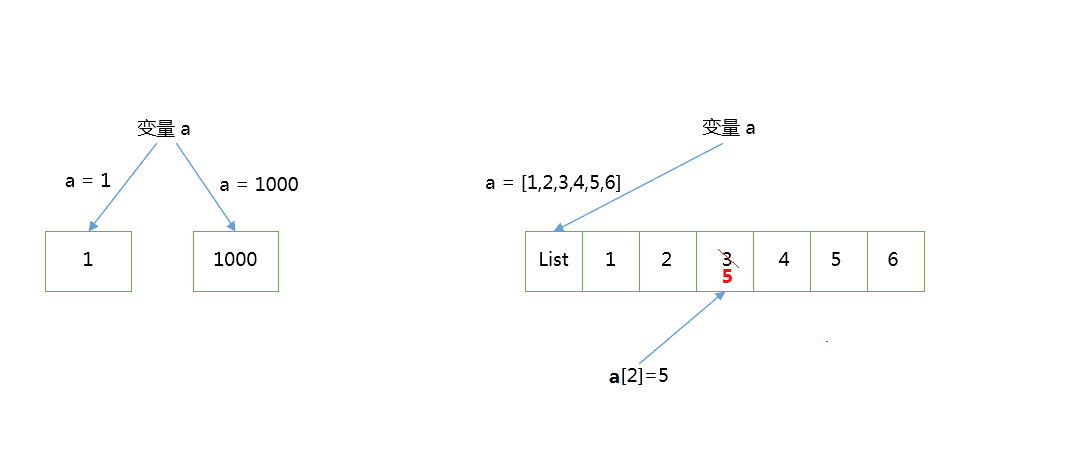
Fourth, the function pass-by-value problem
Let's look at an example:
# -*- coding: UTF-8 -*-def chagne_number( b ):b = 1000b = 1chagne_number(b)print( b )
The final output is:
1chagne_numbernot ?In Python, strings, integers, floats, tuples are immutable objects, while list, dict, etc. are objects that can be changed.
a = 1, in fact, is to generate an integer object 1, and then the variable a points to 1, when a = 1000in fact is to generate another integer object 1000, and then change the point of a, no longer points to the integer object 1, but points to 1000, The last 1 will be discardeda = [1,2,3,4,5,6]is to generate an object list, there are 6 elements in the list, and the variable a points to the list, it a[2] = 5is to change the value of the third element of the list a, which is different from the above, not the a redirects to, but directly modifies the value of the element in the list.
Immutable types: C++-like passing by value, such as integers, strings, tuples. Such as fun(a), only the value of a is passed, and the a object itself is not affected. For example, modifying the value of a inside fun(a) only modifies another copied object and does not affect a itself.
Changeable types: C++-like pass-by-reference, such as lists, dictionaries. For example, fun(a) means that a is really passed, and the a outside of fun will also be affected after the modification.
Therefore, in the first example, b = 1, creates an integer object 1, and the variable b points to this object, and then when the function chagne_number is passed, the variable b is copied by value, and only the value of b is passed, and it has no effect to b itself. For details, you can look at the modified example for a better understanding through the printed results.
# -*- coding: UTF-8 -*-def chagne_number( b ):print('函数中一开始 b 的值:{}' .format( b ) )b = 1000print('函数中 b 赋值后的值:{}' .format( b ) )b = 1chagne_number( b )print( '最后输出 b 的值:{}' .format( b ) )
The result printed:
函数中一开始 b 的值:1函数中 b 赋值后的值:1000最后输出 b 的值:1
Of course, if the parameter is a changeable type, after calling this function, the original value will also be changed. The specific example is as follows:
# -*- coding: UTF-8 -*-def chagne_list( b ):print('函数中一开始 b 的值:{}' .format( b ) )b.append(1000)print('函数中 b 赋值后的值:{}' .format( b ) )b = [1,2,3,4,5]chagne_list( b )print( '最后输出 b 的值:{}' .format( b ) )
The result of the output:
函数中一开始 b 的值:[1, 2, 3, 4, 5]函数中 b 赋值后的值:[1, 2, 3, 4, 5, 1000]最后输出 b 的值:[1, 2, 3, 4, 5, 1000]
Featured Article Recommendations
Follow me and catch the latest and most trendy black technology together